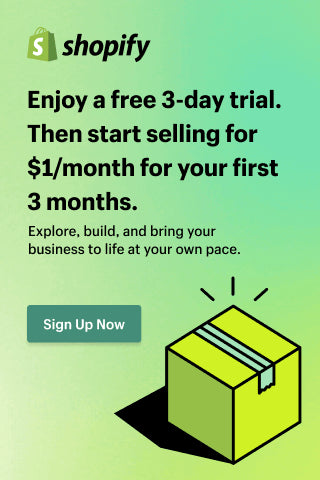Print-On-Demand vs. Dropshipping: Which Is Profitable For You?
Are you dreaming of launching your online business but feeling stuck between print-on-demand vs. dropshipping models? You're not alone. Many entrepreneurs find themselves at this crossroads.
Both print-on-demand and dropshipping offer low-barrier entry points to eCommerce, but they serve different needs and considerations.
In this blog post, we'll help you determine which path best aligns with your skills, resources, and aspirations so you can make an informed decision about your eCommerce future.
Print-on-Demand vs. Dropshipping: The Complete Comparison
Print-on-demand (POD) is a business model in which purchases are made only after a customer places an order. It focuses on customized items featuring your designs. Dropshipping, meanwhile, involves selling pre-existing products that a supplier ships directly to your customers without handling any inventory.
While these models might seem similar, they differ in several key aspects. Let's examine these differences to see which model is more profitable for you.
Initial costs

Print-on-demand requires minimal startup capital. You only need to invest in creating designs and setting up your online store. Most POD platforms let you list products for free, charging you only when a sale occurs.
POD design tools range from free options like Canva to professional software subscriptions, depending on your needs and existing skills.
Dropshipping also boasts low entry costs but might need slightly more upfront investment. You'll need to pay for your eCommerce platform, possibly purchase product samples, and invest in supplier directory subscriptions like Spocket or DSers. Some dropshipping suppliers also charge monthly access fees.
The cost difference between these models isn't different, though dropship vs. print on demand occasionally shows higher initial expenses when premium supplier directories or extensive product testing is involved.
Risk level
Print-on-demand is a low financial risk model. Since products are only manufactured after purchase, you'll never be stuck with unsold inventory. Your only risk is a time investment in creating designs if they do not match your audience's favorite.
Dropshipping carries slightly higher risk factors. Market saturation, supplier reliability issues, and changing product trends can strongly impact your business.
Additionally, you might purchase inventory samples that don't have high sales or face quality control problems from suppliers you haven't personally vetted.
So, when evaluating dropshipping vs print on demand from a risk perspective, POD generally offers the safer path for risk-averse entrepreneurs.
Inventory control

Print-on-demand eliminates inventory management. Your POD partner handles production, storage, and shipping once orders arrive. This hands-off approach means zero inventory costs or fulfillment headaches.
With dropshipping, you don’t need to invest in personal inventory management, but you must carefully monitor your suppliers' stock levels. Nothing frustrates customers more than ordering a product only to discover it's unavailable after payment.
Both models free sellers from traditional inventory concerns, making this category a tie in the print-on-demand vs. dropshipping comparison.
Product choice
Print-on-demand limits your offerings to customizable products like t-shirts, mugs, posters, phone cases, and other items that show your designs. While the catalog of printable products keeps expanding, you're still constrained to decorative and wearable goods.
Dropshipping provides an unlimited product selection of countless categories. From electronics to home goods, beauty products to pet supplies. This versatility lets you pivot quickly between niches or build diverse product catalogs.
For entrepreneurs seeking broad product flexibility, dropship vs print on demand clearly favors the former.
Profit margins

Print-on-demand typically generates 20-30% margins after accounting for production and shipping costs. Premium, unique designs can command higher prices, potentially boosting your margins, but base production costs are relatively fixed.
Dropshipping margins vary depending on your niche and supplier relationships. General margins fall between 15% and 45%, with commodity products at the lower end and specialty items commanding premium prices.
Established dropshippers who negotiate directly with manufacturers can achieve margins exceeding 50%.
When comparing potential profitability, dropshipping edges out print-on-demand for maximum profit potential, though POD offers more consistent margins with less variability.
Customer service
Print-on-demand customer service usually addresses design expectations and potential printing quality issues.
Since production timelines are longer than standard eCommerce (typically 3-7 days plus shipping), managing customer expectations is more crucial.
Dropshipping customer service challenges include shipping times (especially with international suppliers), product quality control, and handling returns across potentially diverse product categories.
A print on demand store vs one product dropshipping operation might handle customer service more efficiently due to focused expertise with a single product type, though both models require attentive customer care.
Marketing and branding

Print-on-demand has exceptional branding opportunities. Your unique designs are your competitive advantage. This built-in brand differentiation simplifies marketing efforts, especially through visual platforms like Instagram and Pinterest.
Dropshipping demands more sophisticated marketing strategies since you're selling products elsewhere.
Your brand value stems from curation, presentation, and customer experience rather than unique products. Successful dropshippers excel at storytelling, community building, and solving specific niche problems.
For creatively inclined entrepreneurs, print-on-demand gives natural branding advantages, while marketing-savvy individuals might leverage dropshipping's flexibility more effectively.
Competition
Print-on-demand faces significant competition in popular categories like slogan t-shirts or motivational posters. However, truly unique artistic styles or hyper-specific niche designs can still carve out profitable market segments with loyal followers.
Dropshipping battles intense competition across most product categories, with countless stores often selling identical items. To stand out in the market, businesses should have exceptional marketing, customer service, and value-added content that enhances the shopping experience.
Neither model escapes competitive pressures, though print-on-demand vs. dropshipping typically shows POD offering easier differentiation opportunities.
Growth opportunities

Print-on-demand businesses scale by expanding design collections, exploring new printable products, and building audience-specific product lines. However, growth limitations emerge from the restricted product types and dependency on continued creative output.
Dropshipping scales through category expansion, supplier relationship development, and potentially evolving into private labeling or custom manufacturing partnerships.
The growth ceiling sits considerably higher than POD, with some dropshipping operations evolving into full-scale retail brands.
For long-term growth potential, dropship vs. print on demand typically favors dropshipping, particularly for entrepreneurs with business development rather than creative skills.
Print-on-Demand vs. Dropshipping: Which is Profitable for You?
You'll thrive with POD if you enjoy creating designs more than hunting product trends and if building a brand around your creative vision excites you, So, Print-on-demand works best if you are:
-
Creative individuals with design skills or artistic vision
-
Entrepreneurs seeking the absolute lowest-risk entry to e-commerce
-
Personal brand builders with established social followings
-
Niche content creators looking to monetize their audience
-
Side-hustlers with limited time for business management
Besides, you're likely suited for dropshipping if you prefer analyzing markets to creating designs and if you're excited by the challenge of differentiating through superior marketing and customer experience. Dropshipping delivers optimal results for:
-
Market researchers skilled at identifying trending products
-
Digital marketers with advertising and funnel-building expertise
-
Entrepreneurs comfortable with higher complexity and variability
-
Business-minded individuals seeking higher profit potential
-
Those interested in building sellable business assets
>> Don't miss:
- How to Start Dropshipping in 2025: 6-Step Guide
- Top 6 Dropshipping Shopify Apps to Start Dropshipping
- Top 10 Mistakes To Avoid When Finding Trending Products
Final Takeaways
When weighing print-on-demand vs. dropshipping, remember that profitability stems from the business model and how well it aligns with your skills and resources.
Many successful entrepreneurs combine both models, using print-on-demand for brand-building merchandise while dropshipping complementary products to expand their catalog.
This hybrid approach leverages each model's strengths while mitigating their weaknesses.
Whatever path you choose, success will come from deeply understanding your target audience, providing exceptional value, and consistently selling quality experiences that keep customers returning to your store.
If you're planning to do dropshipping, Fiidom is an invaluable AI-driven tool that can simplify and accelerate your dropshipping winning product selection process.
Fiidom uses advanced algorithms to research and identify winning products that have high potential in the market, helping you choose items that are likely to succeed.
In addition, Fiidom can recommend optimal pricing strategies and generate compelling product descriptions, saving you the time and effort of manually researching and writing content.
With Fiidom handling these critical tasks, you can focus more on growing your business and optimizing other aspects of your eCommerce strategy.
FAQ
Can I run both print-on-demand and dropshipping from the same store?
Absolutely! Many eCommerce platforms allow you to integrate POD suppliers and dropshipping vendors simultaneously. This hybrid approach works particularly well when your POD products and dropshipped items complement each other naturally.
Which model requires more time investment: print-on-demand or dropshipping?
Print-on-demand typically requires more upfront creative time developing designs but less ongoing operational management. Dropshipping has less product creation time but demands more continuous effort in supplier management, product research, and customer service.
If comparing dropship vs. print on demand for a complete beginner, POD often proves less time-intensive overall.
Which business model is more profitable during the holiday season?
Both models experience significant holiday sales boosts, but print-on-demand excels during gift-giving seasons when custom and personalized items command premium prices and higher conversion rates.
Dropshipping can achieve massive holiday volume with trend-focused products but typically faces fiercer competition and tighter margins during these peak periods. Strategic sellers in either model plan inventory and marketing months ahead of major shopping events.



